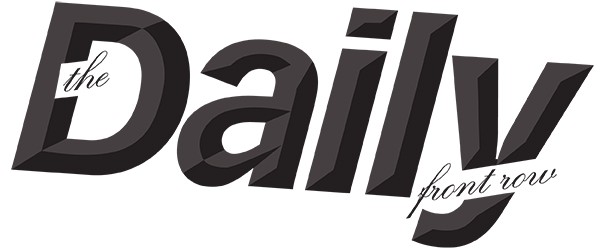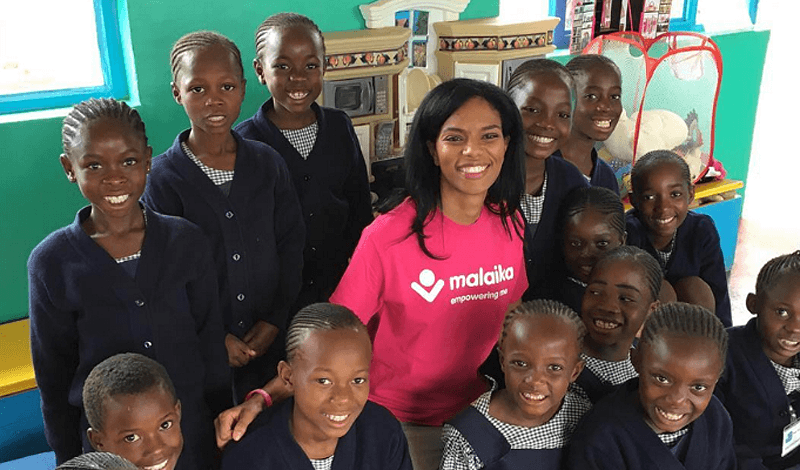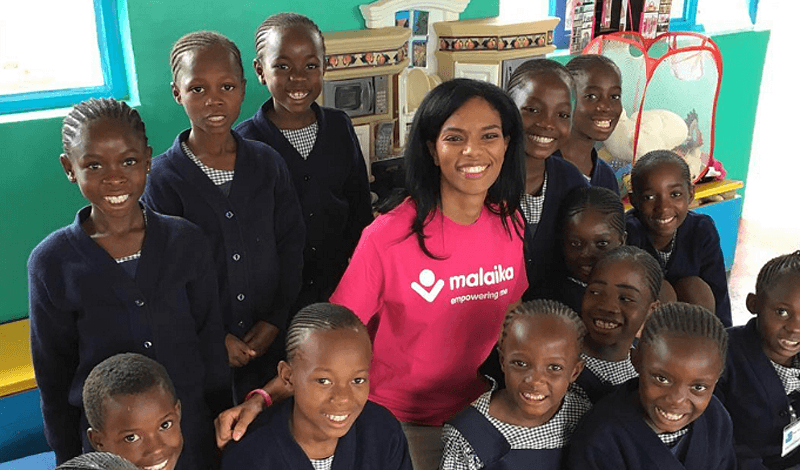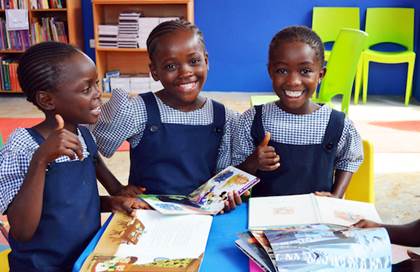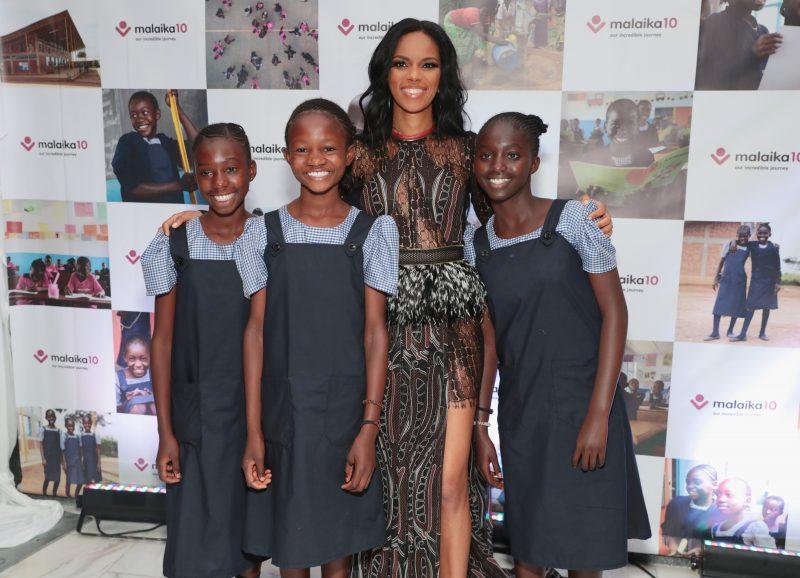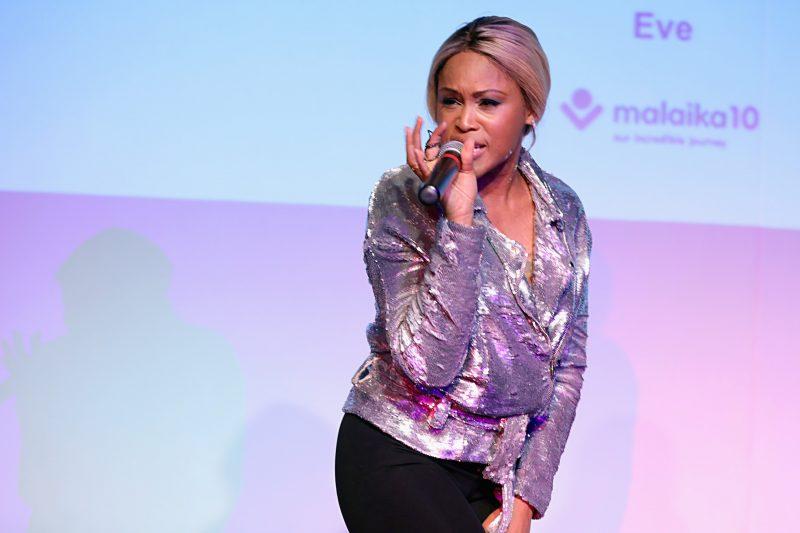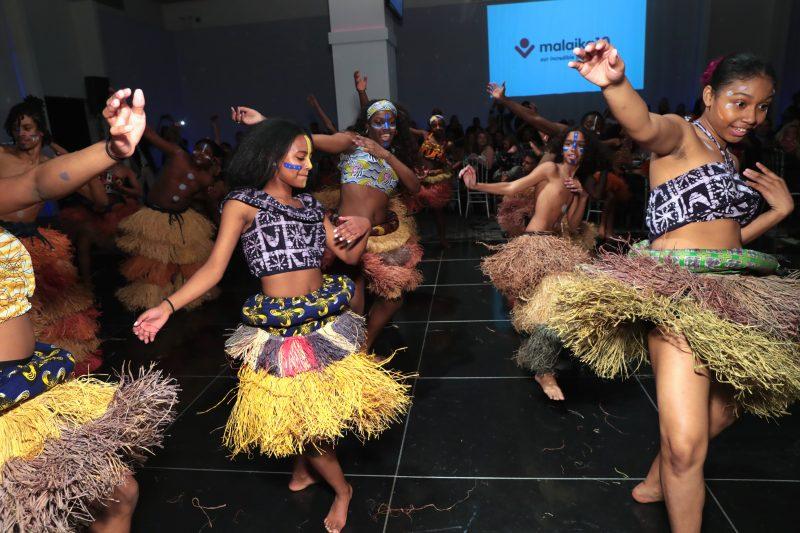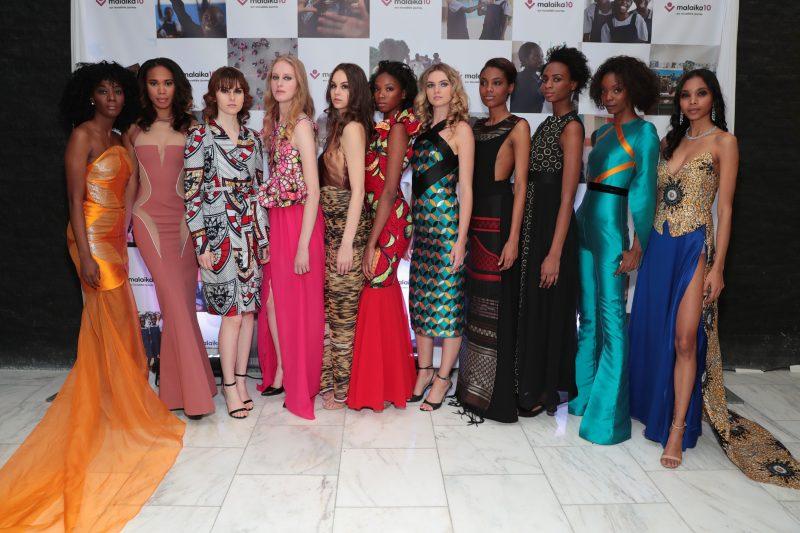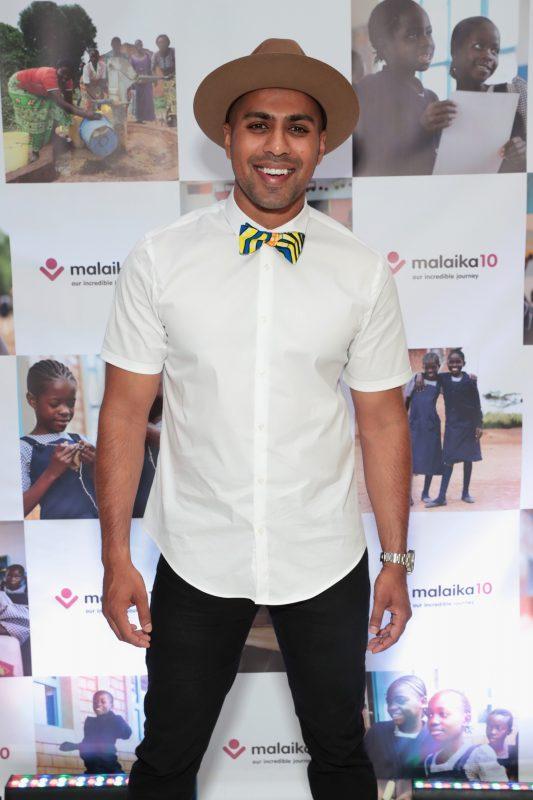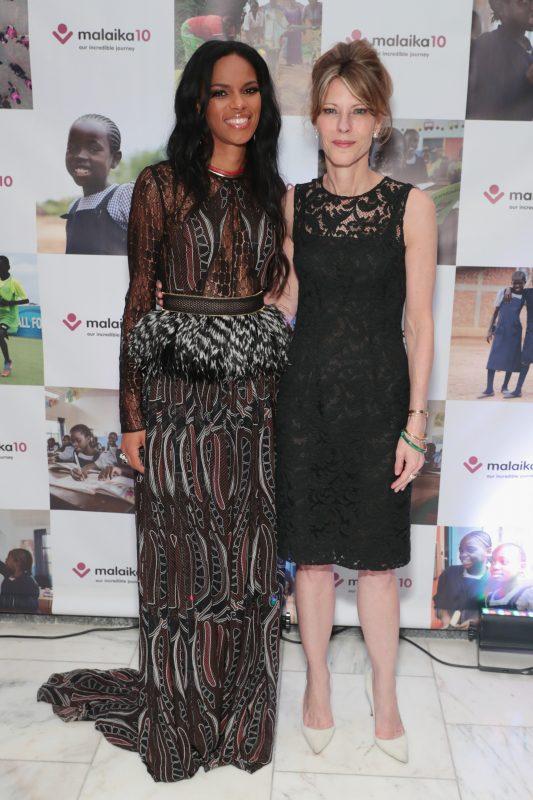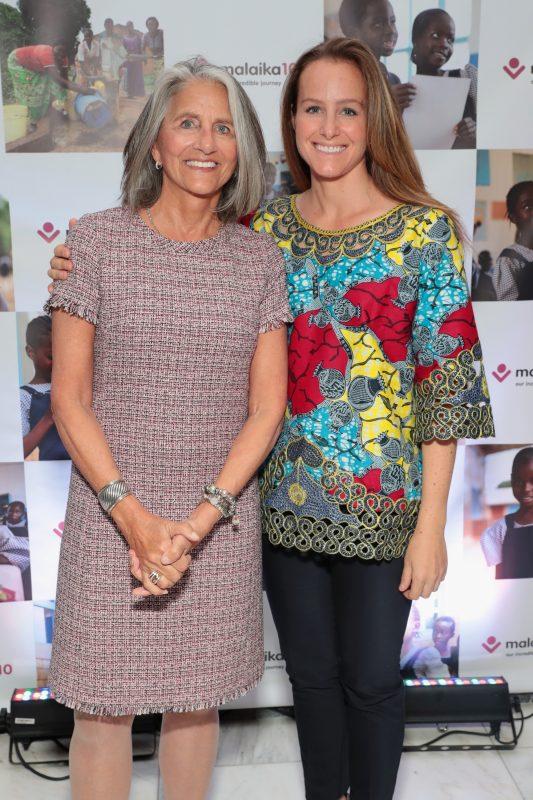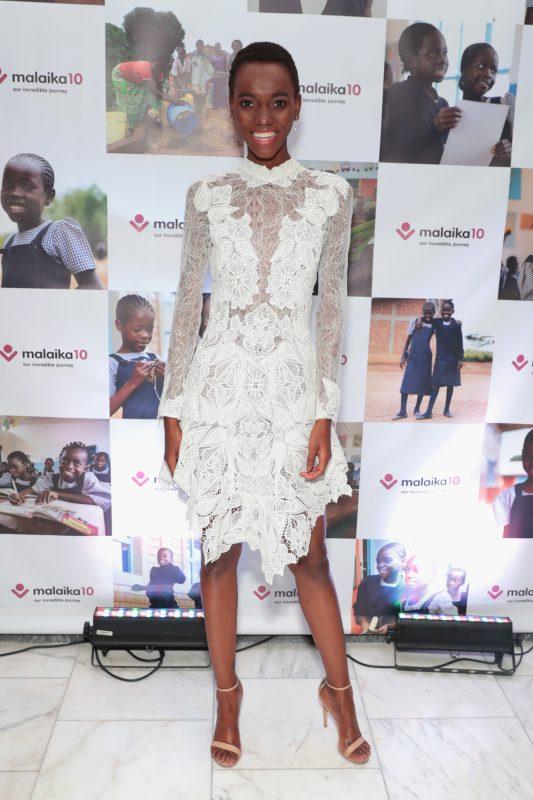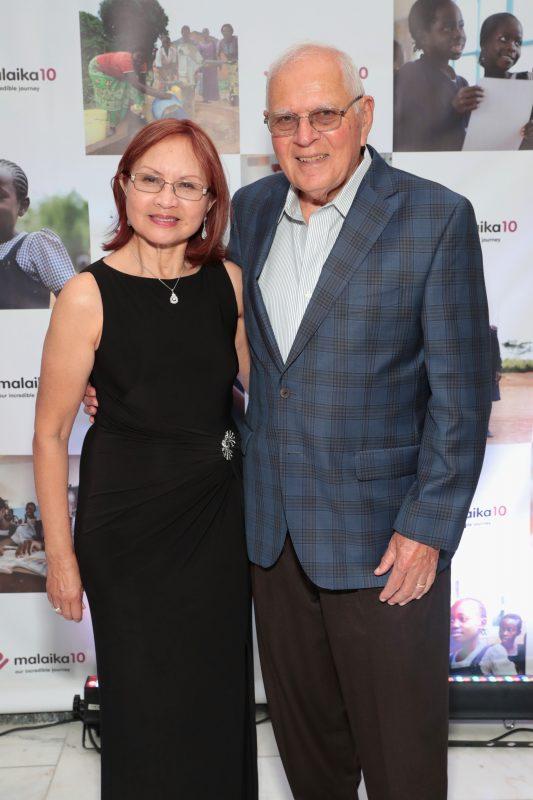There have been many models who have lent their name, image, or time to a cause, but model and humanitarian Noella Coursaris Musunka took it one step further when she decided to found the Malaika school for girls in a remote village in the Congo. Last night, Musunka threw a fundraiser for the school which drew a packed house at New York’s Espace. Three of the school’s 6th grade students flew in to celebrate, where a Congolese New York-based dance group Batoto Yetu performed (a must-see) and Malaika ambassador and Grammy award-winning artist Eve performed. Plus, ELLE’s Robbie Myers came out to support! We caught up with Musunka ahead of the event to hear about her incredible journey and passion for furthering female education and community development in the Congo.
What brought you back to the Congo after so many years?
I was born there, but my father died when I was 5 and my mother couldn’t keep me, so I grew up with family in Belgium and Switzerland. I went back to see my mom after 13 years, when I was 18. I wanted to know my mother and I wanted to know where I was from. You can grow up with relatives, but you will never be loved the same way that your parents love you.
What were your impressions when you returned?
When I went to see her, she was extremely poor and living in very bad conditions. I always promised myself that one day I would help her and one day I would do something for my country. I wanted to do something for women and girls so that they could stand on their own feet, so that other women won’t have to send their children away. I think it was an ideal dream for me.
What happened after your return to the Congo?
I finished my studies in Switzerland and I went to London where I got scouted to be a model. I modeled for 10 years between New York and London. I set up the foundation in New York with a really amazing team where none of us were taking a salary. Only a few years ago, we hired one girl to work part-time for us. We only pay our local staff so 90 percent of the money we raise goes to the project on the ground. At first we were sponsoring girls that we happened upon in the streets or the orphanages, but every time we wanted to help them with their school or give them more help it was very hard. So we decided it would be better to build our own school and really control from A to Z what happens with the girls’ education. The Congo is so rich, but most of the population lives in poverty. The only way to elevate the people is through education, so they can take care of their own country and own continent.
Where is the school located?
The school is in the southeast of the Congo in a village where there is no electricity and no water. When we decided to build the school we had a lot of discussions with the community, because it was new for them to have a school for girls. When they can send a child to school, they always send the boys first.
How did they feel about the girls’ school?
They were very excited and very impressed that I had a desire to do something for my country.
What was the first step?
Before we began to build the school, we had to build a well. Then we taught the community how to make the bricks—all of this was done with eco-friendly practices. All of the girls enter the school at 5 years old and then we grow with them. So when we started to build the school, we only built four classrooms. We had 104 girls and then every year since we have opened another classroom. It was originally 30 girls per class. Now we have 242 girls and in September we will have 340 students.
Tell us about the teachers.
We put a lot behind our teachers and we really give them a lot of training. They teach the girls both French and English; they learn math; they have piano classes; they play sports; and we teach them to recycle. I have two kids and they look forward to going to school because the school is beautiful and they have nice classrooms. It’s so important to have a good environment, so the school is full of colors and we give each student breakfast and lunch. Normally, these kids eat two or three times a week and sometimes, not even that. So we really make sure that they are fed and everything is free at the school—we are one of the only free schools in the Congo. In the first year that we opened the school, when the kids would be let out for the holidays they would come back hungry and so skinny with torn clothes. We decided to do a program for the holidays where the girls could have one meal program per day during the holidays.
Where does the food come from?
On our school grounds, we have agricultural land for bio farming. The food that we are growing goes to the school canteen. We teach the parents and the youth how to grow the food.
How old are you oldest students?
Now our oldest girls are 11 or 12, so we have six more years to grow with them and we plan on opening a secondary school. Once they turn 18, we really want to fight for some of them to go to universities and have scholarships for them. A few of those girls we are flying in from the Congo for the event. It will be their first time ever on a plane. For some of them, it will be the first time they have ever slept in a real bed. Oftentimes, these girls are sleeping on the floor in their homes. Eventually, we want to be able to offer one mattress for each child. Even with the water—when we built the well, so many people were coming to the school to get water. So we said, ‘What are we going to do when we close the school? How will the village get water?’ We began to build wells every year. We’ve built seven wells that impact more than 14,000 people a year.
Wow! In what other ways has the school impacted the community?
We built a community center, because what we found was that you can teach the students, but you need to teach the basics to the parents. It has to work on both sides. So we teach the community including the parents and the boys how to read, to write, mathematics, family planning, and sewing. The mothers make the uniforms for the students at the school. We also use football and sports for social activities at the community center. We also help with health. This year we distributed more than 9,000 malaria nets at the community center. We have more than 5,000 people per year visiting our community center. All of our programs are free. We’re really developing a small village. In the future, we want to develop specialized training at the community center where they can develop special skills. Sadly, one of our six-year-old students passed away around Christmas time because she didn’t have access to good healthcare, so we really want to build a healthcare center at the school. That is one of our goals with our fundraiser this month. We can’t help everything, but we can try.
What is the criteria for being accepted to the school?
They have to live 1 to 3 kilometers (0.6 to 1.9 miles) from the school and they have to be at least 5 years old. We take one child per family. We really want to develop a good curriculum, because we are hoping these girls and this community will be the next agents of change. They can be leaders. They can be doctors, journalists, or whatever they want. We want them to dream big.
To donate or find out more about Malaika click HERE.
- NEW YORK, NY – MAY 17: (L-R) Lauriane, Louise, Noella Coursaris Musunka and Mamie attend as Malaika hosts Malaika10 honoring Barry Segal & Tina Buchan at Espace on May 17, 2017 in New York City. (Photo by Cindy Ord/Getty Images for Malaikla10)
- NEW YORK, NY – MAY 17: Rapper Eve performs onstage as Malaika hosts Malaika10 honoring Barry Segal & Tina Buchan at Espace on May 17, 2017 in New York City. (Photo by Cindy Ord/Getty Images for Malaikla10)
- NEW YORK, NY – MAY 17: Members of the Swahili childrens dance troupe, Batoto Yetu attend as Malaika hosts Malaika10 honoring Barry Segal & Tina Buchan at Espace on May 17, 2017 in New York City. (Photo by Cindy Ord/Getty Images for Malaikla10)
- NEW YORK, NY – MAY 17: Swahili children’s dance troupe, Batoto Yetu attend as Malaika hosts Malaika10 honoring Barry Segal & Tina Buchan at Espace on May 17, 2017 in New York City. (Photo by Cindy Ord/Getty Images for Malaikla10)
- NEW YORK, NY – MAY 17: Members of the Swahili children’s dance troupe, Batoto Yetu attend as Malaika hosts Malaika10 honoring Barry Segal & Tina Buchan at Espace on May 17, 2017 in New York City. (Photo by Cindy Ord/Getty Images for Malaikla10)
- NEW YORK, NY – MAY 17: Model and Malaika founder, Noella Coursaris Musunka (L) and rapper Eve attend as Malaika hosts Malaika10 honoring Barry Segal & Tina Buchan at Espace on May 17, 2017 in New York City. (Photo by Cindy Ord/Getty Images for Malaikla10)
- NEW YORK, NY – MAY 17: Models attend as Malaika hosts Malaika10 honoring Barry Segal & Tina Buchan at Espace on May 17, 2017 in New York City. (Photo by Cindy Ord/Getty Images for Malaikla10)
- NEW YORK, NY – MAY 17: Media personality Tai Beauchamp attends as Malaika hosts Malaika10 honoring Barry Segal & Tina Buchan at Espace on May 17, 2017 in New York City. (Photo by Cindy Ord/Getty Images for Malaikla10)
- NEW YORK, NY – MAY 17: DJ Martin 2 Smoove attends as Malaika hosts Malaika10 honoring Barry Segal & Tina Buchan at Espace on May 17, 2017 in New York City. (Photo by Cindy Ord/Getty Images for Malaikla10)
- NEW YORK, NY – MAY 17: Model and Malaika founder, Noella Coursaris Musunka (L) and editor-in-chief at ELLE Magazine, Robbie Myers attend as Malaika hosts Malaika10 honoring Barry Segal & Tina Buchan at Espace on May 17, 2017 in New York City. (Photo by Cindy Ord/Getty Images for Malaikla10)
- NEW YORK, NY – MAY 17: Honoree and chair of the Buchan Initiative Fund, Tina Buchan (L) and her daughter, Jen Buchan attend as Malaika hosts Malaika10 honoring Barry Segal & Tina Buchan at Espace on May 17, 2017 in New York City. (Photo by Cindy Ord/Getty Images for Malaikla10)
- NEW YORK, NY – MAY 17: Actor Eric West (L) and singer Tashiana Washington attend as Malaika hosts Malaika10 honoring Barry Segal & Tina Buchan at Espace on May 17, 2017 in New York City. (Photo by Cindy Ord/Getty Images for Malaikla10)
- NEW YORK, NY – MAY 17: Model Herieth Paul attends as Malaika hosts Malaika10 honoring Barry Segal & Tina Buchan at Espace on May 17, 2017 in New York City. (Photo by Cindy Ord/Getty Images for Malaikla10)
- NEW YORK, NY – MAY 17: Dolly Segal (L) and honoree and founder of the Segal Family Foundation, Barry Segal attend as Malaika hosts Malaika10 honoring Barry Segal & Tina Buchan at Espace on May 17, 2017 in New York City. (Photo by Cindy Ord/Getty Images for Malaikla10)
- NEW YORK, NY – MAY 17: Musicians Elektra Kilbey (L) and Miranda Kilbey of Say Lou Lou attend as Malaika hosts Malaika10 honoring Barry Segal & Tina Buchan at Espace on May 17, 2017 in New York City. (Photo by Cindy Ord/Getty Images for Malaikla10)
